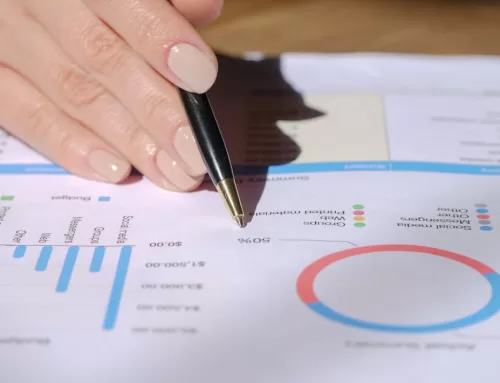Applies to QB Desktop, QuickBooks Enterprise and QuickBooks Online
What is the “Undeposited Funds Account” in QB, and why use the “Banking > Make Deposits” option? (In QBO, “+” sign > Other column > Bank Deposit). These two features often work together and in certain situations can make your trail of accounting entries clearer, more precise and more professional, especially when it’s time to reconcile bank accounts. With a little knowledge of how this works, deposits in QB will be detailed and listed very closely to what is seen on the bank statement. This is much easier than trying to add many small amounts to match various lump-sum credits seen on the bank statement.
Let’s look at four common examples of when “Make Deposits” and the Undeposited Funds account are especially useful:
- Multiple customer checks are deposited in one trip to the bank
- Cash Receipts
- Credit Card Transactions
- Incoming Bank Wires to pay an invoice with fees deducted.
Multiple customer checks are deposited in one trip to the bank
Let’s say your business receives checks on: Monday ($1,000), Tuesday ($2,000) and Wednesday ($3,000). These checks are thrown into a drawer and on Thursday morning the 3-check, $6,000 deposit is finally made at the local bank branch. We want our accounting system to faithfully record all of this, and make it easy at reconciliation time. So on Monday we open the envelope with the first check, and then in QB enter: Banking > Make Deposits, and in the top-left part of the screen “Deposit To” field use either: (1) your standard bank account for incoming checks; or in this situation (2) Undeposited Funds since the check will not be deposited right away, or if it will be deposited at the same time as multiple other checks.
in the “Received From” drop-down enter the customer name, for example “AAA Corp.” QB may seem to discourage continuing down this path by saying “The customer has outstanding invoices. To apply this payment to those invoices, use the Receive Payments windows before you deposit the payments.” But in this case just click “OK” to get away from the message and continue. You’ll most likely enter your standard sales account into the “From Account” drop-down. Then enter the applicable amounts into the “Memo”, “Chk No”, “Pmt Method” and “Amount” fields.
If the incoming checks are for open invoices, then the “From Account” is probably Accounts Receivable. But it might be for an online sale or cash sale in which case credit an Income account.
Continue and enter all checks received but not yet deposited in this way. In our example, a similar $2,000 “Make Deposit” debit to Undeposited Funds is made on Tuesday, and again for $3,000 on Wednesday.
Note that Undeposited Funds has grown by $6,000 since Monday, but none of this has hit the checking account yet.
On Thursday morning you go to the bank and deposit all three checks. Afterwards and back at the office the QB entry is: Banking > Transfer Funds. Transfer from Undeposited Funds to the bank checking account. The stage is now set for an easier bank rec – both the bank statement and QB will show a single $6,000 entry on Thursday. Easy to match-up, and QB still knows all of the details in the Undeposited Funds account.
Cash Receipts
Retail businesses often realize large numbers of cash sales. Cash receipts should also be debited to Undeposited Funds. When its time to go to the bank, deposit the cash at the same time as your undeposited checks. On the accounting side, only debit to the bank account when the cash is actually deposited (transfer as described above; debit bank account, credit Undeposited Funds). Before the bank deposit but after receiving the cash, use Undeposited Funds. Again, this shows that cash has been collected and should (better) be available for deposit at a later time.
In all flavors of QB Desktop, this is Customers > Enter Sales Receipts and in QBO use “+” sign > Sales Receipt.
Credit Card Transactions
Similarly, credit card payments are often received throughout the day, and these may also be entered to Undeposited Funds. At the end of the day, in QB transfer the entire batch amount from Undeposited Funds to the merchant bank account. The batch amount is what will appear on your bank statement; the detail for this can be seen in Undeposited Funds.
We are now accurately recording what is actually happening: when checks, cash or credit cards amounts are received and processed. These are separate transactions from bank deposit of the funds. Indeed, the accounting system should always reflect the reality of transactions, regardless of whether they involve the bank.
Incoming Bank Wires to pay an invoice with fees deducted
Finally, here is an interesting and common example of when a customer pays on an invoice with an incoming wire, but the bank deducts the wire fee. This is a dilemma for many firms and is often handled inconsistently.
Normally this begins when an invoice is generated and sent to the customer. Let’s use an example of $2,500.00
When the customer sends the $2,500 wire payment, the bank deducts it’s $35 fee and only $2,465 hits our bank account. How do we record that the invoice is fully paid and the wire fee? There are 5 steps:
- In QBO, do “+” sign > Bank Deposit (or in QuickBooks Desktop: Banking > Make Deposits). Then fill out the deposit screen as described above. The deposit amount is $2,465, not $2,500. This is good so far but the invoice is still not marked as paid, even though we’ve entered the deposit is to Accounts Receivable. In fact, if you do an A/R report at this point, you’ll see an open invoice for $2,500 and a negative (-$2,500) amount in the Current column, both for this customer. We’ll fix in Step 3.
- Make a journal entry (Company > Journal Entry, or in QBO “+” sign > Journal Entry. Debit bank charges of $35 and credit $35 to the bank account.
- Do “+” sign > Receive payment. Then enter the customer name and open invoices will appear in the “Outstanding Transactions” area, mid-screen. Select the desired invoice. But make sure that the “Amount Received” field is set to 0.00.
- Go lower on the screen and see the “Credits” section. Here you should see the $2,465 deposit, and the $35 journal entry. Click both to “pay” the invoice. The “Amount to Apply” field should now have $2,500.00, and the “Amount to Credit” is $0.00.
- Click “Save and close” and you are done! The correct amount is in your bank account, the invoice is marked as paid, and the bank fee is included too.
Using these flexible QB features allows accountants to enter the details of each check, credit card payment. cash receipt or wire transfer into the system. All of these appear as easy-to-match lump sum amounts during bank reconciliations. Such detail is important for management or audit inquiries, and a real-time saver. Furthermore, auditors will appreciate the easy-to-follow audit trail, and this will hopefully result in a reduced bill at the end of the year. All will be impressed.
Using these methods is also a great internal control, making it easier for accounting people to see checks, cash, credit card sales and other transactions before they are entered into QuickBooks. Problems may sometimes be seen here, indicating irregularities in the handling of these transactions and unveil either incompetencies or even fraud.
Using the QB “Make Deposits” and the “Undeposited Funds” account is a necessity for firms who process a large number of transactions daily, and especially with the large majority of banks who do not provide sufficient detail on each individual transaction. These features allow more accurate recording of what actually happened in our accounting world, clearer setups for reconciliations, and less headaches when it’s time to deal with auditors or special management reporting requests.







